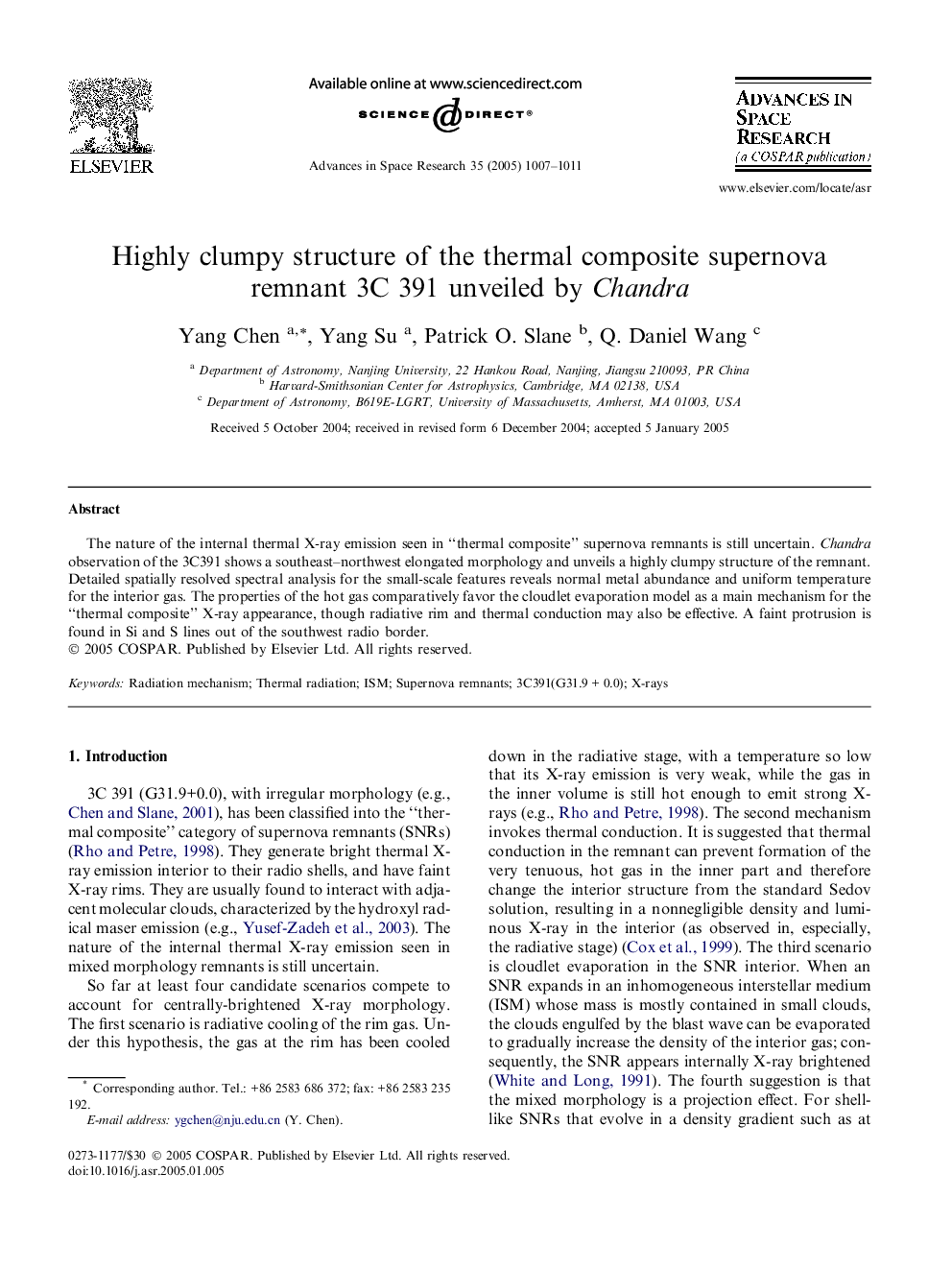| Article ID | Journal | Published Year | Pages | File Type |
|---|---|---|---|---|
| 10695931 | Advances in Space Research | 2005 | 5 Pages |
Abstract
The nature of the internal thermal X-ray emission seen in “thermal composite” supernova remnants is still uncertain. Chandra observation of the 3C391 shows a southeast-northwest elongated morphology and unveils a highly clumpy structure of the remnant. Detailed spatially resolved spectral analysis for the small-scale features reveals normal metal abundance and uniform temperature for the interior gas. The properties of the hot gas comparatively favor the cloudlet evaporation model as a main mechanism for the “thermal composite” X-ray appearance, though radiative rim and thermal conduction may also be effective. A faint protrusion is found in Si and S lines out of the southwest radio border.
Related Topics
Physical Sciences and Engineering
Earth and Planetary Sciences
Space and Planetary Science
Authors
Yang Chen, Yang Su, Patrick O. Slane, Q. Daniel Wang,
